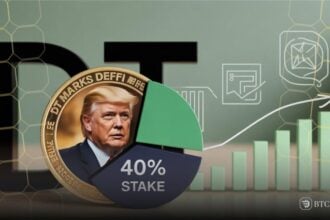Mark Uyeda, Acting Chairman of the U.S. Securities and Exchange Commission (SEC), made strong statements while attending the recent roundtable of the Crypto Task Force.
Recalling a historic reference point, he remembered when, more than 200 years ago, early stockbrokers created the basis of today’s regulated financial markets under a buttonwood tree. Uyeda feels that the crypto sector finds itself at the same point today.
He observed that crypto exchange platforms developed in an organic way through supply and demand, but mostly outside the regulatory framework.
As they expanded, some state regulators moved in, applying money transmitter laws to treat crypto platforms as currency exchanges. This created a patchwork of state-level regulation.
Uyeda cautioned that such a patchwork method of regulation could suppress growth. We should move towards a more consolidated scheme, he said. Under a transparent federal model, platforms may be able to conduct business under one SEC license. That would be more effective than holding fifty state licenses.
Notwithstanding this vision, Uyeda cited challenges. Under the existing law, exchanges within the country are only able to list registered securities.
However, most of the asset-backed tokens are not registered. This presents a challenge for trading platforms looking to move into tokenized securities.
Crypto exchange models challenge federal rules
He also cited technical reasons. Rule 611, the so-called “order protection rule, does not readily extend to securities that trade both on traditional and blockchain platforms. That poses a threat for brokers looking to serve both markets.
However, crypto exchanges function differently from their traditional counterparts. The majority of crypto trading platforms execute, clear, and have in-house custody. Vertical integration, although effective, doesn’t dovetail with current federal regulation.
Nonetheless, Uyeda remains optimistic. Blockchain has the ability, he thinks, to make markets work more effectively. Tokenized assets, for instance, might make capital more efficient. Smart contracts might facilitate 24/7 trading that doesn’t depend on middlemen. But, as he pointed out, U.S. securities laws never planned for such tools.
In order to progress, Uyeda proposed a provisional, contingent exemption regime. This would enable innovation but provide regulators time for creating durable solutions. Uyeda invited developers and platforms to assist in shaping such a policy by pointing out where relief will facilitate progress responsibly.
Uyeda closed by expressing his thanks to the Crypto Task Force and panelists. He hoped that the roundtable would spur further conversations and assist with charting the future of U.S. crypto regulation.







